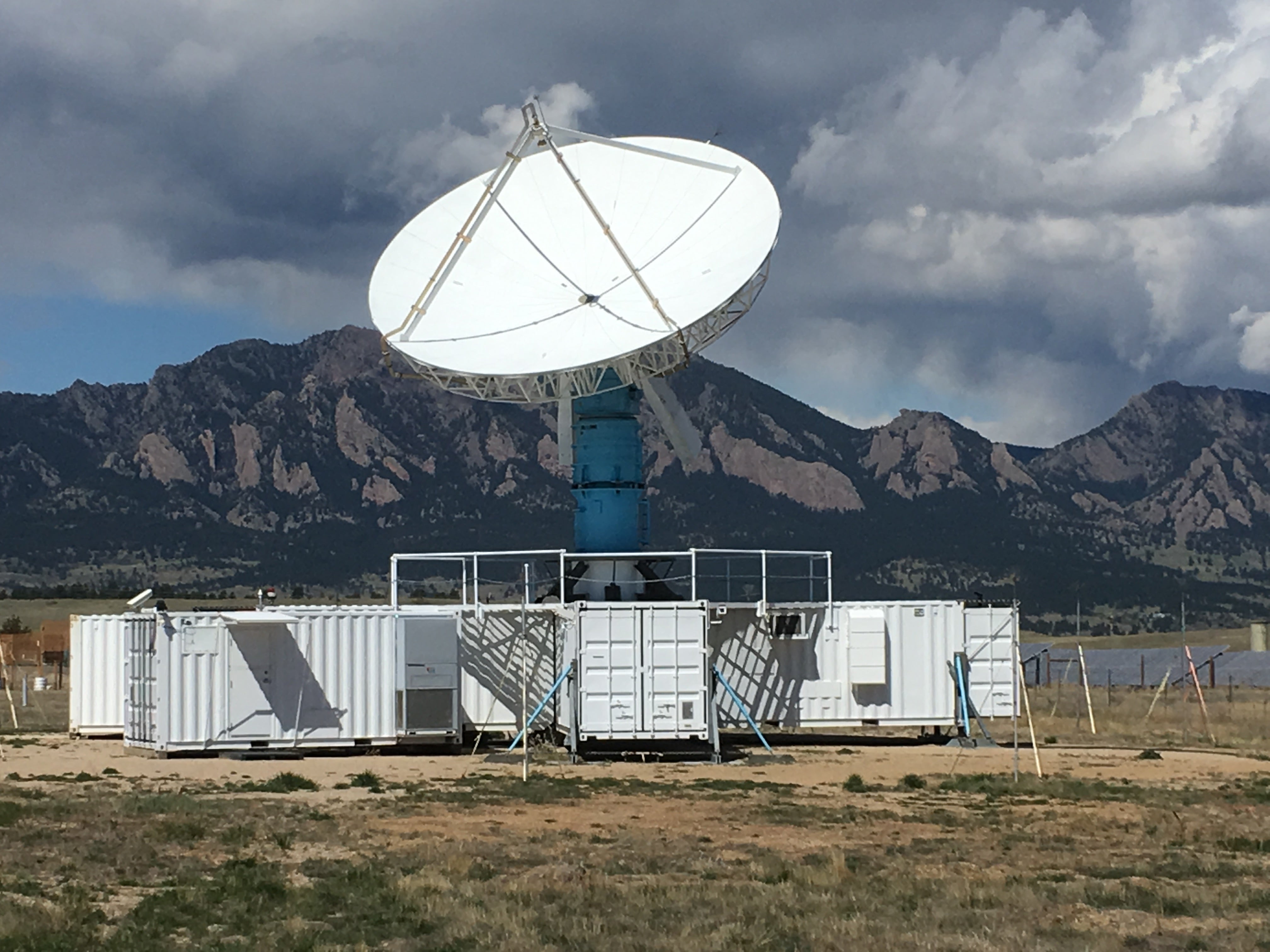S-Pol
The S-band Dual Polarization Doppler Radar (S-Pol) is a research-grade, transportable, ground-based, dual-polarized, Doppler weather radar. As an S-band radar, S-Pol is sensitive to a wide range of echo types and particle sizes from clear air (primarily via insects) and cloud echoes to severe storms containing heavy precipitation and hail. S-Pol observations provide high-resolution information about precipitation rates, microphysics, and storm structures and kinematics. The radar has been used for many types of research, including weather prediction, monsoon rainfall, and convection initiation.
An innovative system design eliminates the need for a radome and allows for S-Pol to be packed into eight standard 20 ft shipping containers that provide a base when the radar is set up. The radar needs only minimal surface site preparation and its relative ease of transport makes S-Pol a valuable tool for studying precipitation and cloud processes at remote sites around the world.
S-Pol is also used as a test bed for development of algorithms to improve the data quality of the National Weather Service's operational weather radar network (NEXRAD). Read more about EOL's NEXRAD data quality program.
Specifications
The S-Pol transmitter can be switched instantly between fast alternating of horizontal and vertical polarizations and simultaneous transmit mode. S-Pol’s Range Height Indicator (RHI) mode provides detail of the vertical structure of a storm. Advanced signal processing software, along with the option to scan more slowly than surveillance radars, produces research-quality data.
| Parameter | Specification |
| Transmitter | 2.7-2.9 GHz |
| Transmit wavelength | 10 cm |
| Pulse width | 1.0 to 1.5 µsec-tapered |
| Pulse repetition frequency (PRF) | 1000 Hz (range = 500 to 1300Hz) |
| Peak power | >600 kW |
| Noise power | -114 dBm |
| Radar Noise figure | 3 dB |
| Dynamic range | 90 dB |
| Bandwidth | 1 MHz, typical |
| Minimum detectable dBZ at 50km/1km | -10.4 dBZ/-44.4 dBZ |
| Polarization switching | H-V alternating, H-V simultaneous or H or V only |
| Mechanical switch isolation | 47 dB measured |
| Antenna | parabolic, center feed |
| Gain | 44.5 dB including waveguide loss |
| Diameter | 8.5 m (28 ft.) |
| Beamwidth | 0.92 degrees |
| First sidelobe | better than -28 dB |
| Isolation (ICPR) | better than -31 dB |
| Scan rate | Up to 12°/s for PPIs; 6 deg/s for RHIs |
| Wind limit | 30 m/s, operation; 54 m/s, survivability |
| Range resolution | 150 m (range = 150 to 675 m) |
| Gate spacing | 37.5 - 150m |
| Number of samples | 64-1024 |
| Times series (I/Q) capability | yes |
| Unambiguous velocity | 25 m/s |
Ka-band
For two field projects - RICO (2004) and DYNAMO (2011) - S-Pol included a Ka-band radar with a 0.86 cm wavelength and matched beams. The Ka-band was retired in 2021 and is no longer available for deployment.
Contact
NCAR/EOL S-Pol Team. (1996). S-band Dual Polarization Doppler Radar (S-Pol). UCAR/NCAR - Earth Observing Laboratory. https://doi.org/10.5065/D6RV0KR8.
